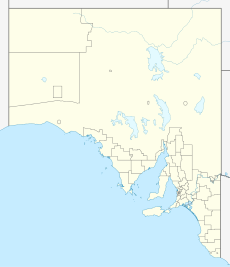Hundred of Pildappa
|
Bosanquet South Australia |
|||||||||||||||
|---|---|---|---|---|---|---|---|---|---|---|---|---|---|---|---|
| Coordinates | 32°28′32″S 135°34′20″E / 32.475650°S 135.572270°ECoordinates: 32°28′32″S 135°34′20″E / 32.475650°S 135.572270°E | ||||||||||||||
| Established | 1913 | ||||||||||||||
| Area | 5,200 square kilometres (2,000 sq mi) | ||||||||||||||
| LGA(s) |
Pastoral Unincorporated Area Wudinna District Council |
||||||||||||||
| Region |
Far North Eyre and Western |
||||||||||||||
|
|||||||||||||||
| Footnotes | Coordinates Adjoining counties |
||||||||||||||
The County of Bosanquet is a cadastral unit in the Australian state of South Australia that covers land both in the north of the Eyre Peninsula and to the peninsula's north. It was proclaimed on 23 October 1913 and was named after Sir Day Hort Bosanquet, the Governor of South Australia from 1909 to 1914.
The county covers land extending from the southern end of Lake Gairdner in the north-east to the southern side of the Gawler Ranges in the south-west. Most of its extent is within the Eyre Peninsula because the peninsula’s northern boundary passes through the county in an east-west direction. It is bounded to the west by the counties of Dufferin and Robinson, to the south by the County of Le Hunte, and to the east by the County of Hore-Ruthven.
There are no formal settlements within the county. The following gazetted localities, mainly based on pastoral leases, are within the county: Thurlga and parts of Buckleboo, Carriewarloo, Cooyerdoo, Corunna Station, Gawler Ranges, Hiltaba, Kolendo, Lake Gairdner, Mount Ive, and Yardea.
...
Wikipedia

